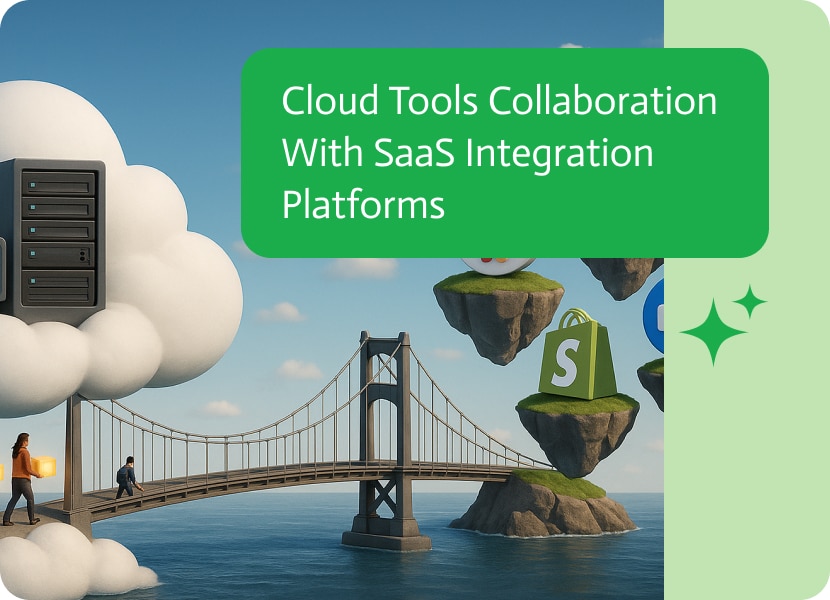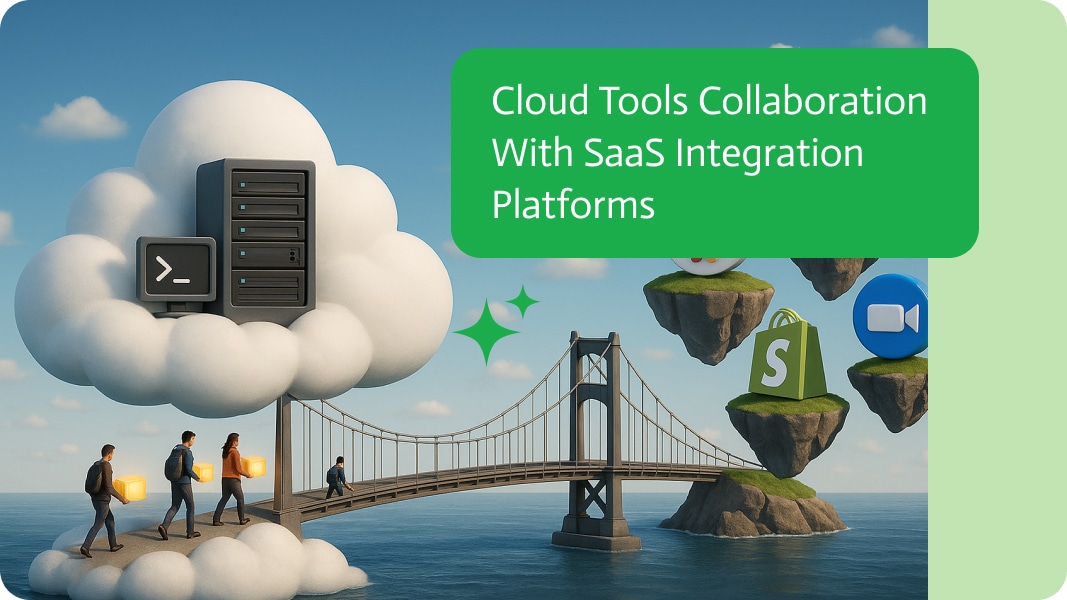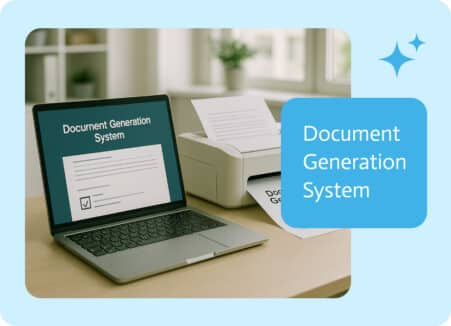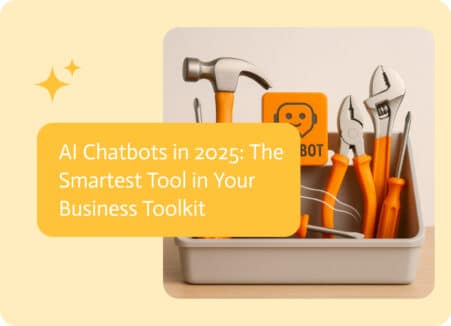

Cloud Tools Collaboration With SaaS Integration Platforms
“Software as a Service” (SaaS) denotes a service model that is usually associated with a software application existing on the internet and being accessible through a browser. You are not required to install anything using Google Docs or Salesforce. Everything is accessed through a simple login.
SaaS integration fulfills the role of the “underappreciated middleman” that brings about collaboration between your apps, making them work for, not against, each other. Instead of “teamwork makes the dream work,” we mean coordination that literally automates, syncs, and streamlines everything from data flow to customer journeys.
What Is SaaS Integration?
Let’s call it as it is: Business software is thoroughly integrated into a complicated ecosystem. You have email platforms, accounting systems, CRMs, and a dozen other apps, each in their own isolated world. Initially, this seems to be manageable. After a couple months, however, you find yourself lost in a sea of passwords, juggling dozens of windows, and wondering why the sales team hasn’t stopped manually copy-pasting lead info from spreadsheets.”
SaaS integration is setting up integrations between SaaS applications with the goal of enabling automatic communication, information flow, and action triggering between the applications. Integration is contrary to treating every tool like an island because it connects them as parts of a bigger system.
Why Noca AI is Gaining Steam as a Go-To Integration Platform
For sure, there are other tools used for integration, and most businesses will stick to the usual suspects. But as modern dev teams and digital operations pros have started to use it, Noca AI is one of the names popping up more and more—and for good reason. With prompt to flow, users can quickly translate plain-language instructions into automated workflows, making integrations faster and more intuitive than ever.
Here’s how Noca AI distinguishes itself:
Smarter, Context-Aware Automation
Noca employs generative AI not only to link apps but also to comprehend the significance of your data. You do not need to sequence every action as a simple “this happens, then this happens next.” Noca lets you create rules that respond to customer intent, user behavior, and transaction patterns. Think about it more as “if this appears important, swiftly direct it to the correct location.”
Real-Time Data Sync with Built-In Intelligence
Forget “out of sight, out of mind”, Noca will not “poll” every 15 minutes. Noca works on real-time webhooks, meaning changes are instantaneous. As if that was not remarkable enough, it has the capability to detect anomalies and trigger alerts: your Stripe account generates abnormal refund transactions, or suddenly your CRM starts recording increased bounce rates from leads.
Enterprise Grade Security and Audit Trails
With Noca, every integration is separately logged, versioned, and encrypted. Noca takes compliance seriously, with built-in support for SOC 2, GDPR, and HIPAA environments. That gives peace of mind for enterprises dealing with sensitive customer information.
Grows As You Grow
Whether you are managing 50 or 5 applications, Noca’s infrastructure scales with you. There is no need to worry about hitting “too many Zaps” limits or paying extra for parallel task runners. This system was constructed for operational needs, not sandbox simulations.
Who’s Using Noca AI?
We all know how much startups love flexibility and enterprises adore control. For marketing teams, the ease with which Noca integrates various tools is refreshing. Same goes for developers; instead of having to messily create middleware every time a new app joins the stack, they can relax knowing there won’t be any hacks needed.
Use cases include:
- Automatically qualifying leads and assigning them to reps based on sentiment and intent
- Routing support tickets with contextual urgency scoring
- Syncing multi-region Shopify inventory to accounting tools with currency-aware logic
- Orchestrating onboarding flows that change based on customer industry or package
Why SaaS Integration Isn’t Just “Nice to Have” Anymore
We’ve moved past the point where businesses could survive with one or two tools. Most teams now use a constellation of apps, 10, 20, sometimes more than 50, depending on the company size and complexity.
Here’s why integration isn’t optional anymore:
1. Manual Work Is a Silent Killer
Cutting and pasting the same info between tools may seem harmless. But it’s slow, error-prone, and eats up valuable time. Multiply that across departments, and you’re hemorrhaging productivity.
2. Disjointed Data = Bad Decisions
When your sales team sees one version of a customer, your support team sees another, and marketing is flying blind—it’s chaos. You can’t make solid decisions with scattered, inconsistent data.
3. Customers Expect Smooth Experiences
Should someone email support and get a response like, “Can you please tell us your order number again?” You’ve already lost credibility. Integrated systems let every department see the full picture.
4. Scaling Without Integration Is a Mess
You can brute-force your way through manually for a while. But as you grow, things will crack. Integration is how you scale without adding headcount for every minor workflow.
How SaaS Integration Actually Works
Let’s get one thing straight: there’s no plug-and-play magic connector that makes all your apps instantly work together. SaaS integration is more of an architecture decision than a button you click.
The way you integrate tools depends on your business, budget, and technical horsepower. Some companies need quick fixes that “just work,” while others require surgical precision and system logic. There’s a spectrum, and choosing a method matters.
Here’s the main integration choices and how they actually function under the hood:
Native Integrations
Many SaaS tools come with their own built-in connections, usually under the “Integrations” tab. These are plug-and-play setups that let you link one app to another without writing a line of code. A classic example: Slack’s native integration with Google Drive or Zoom. You click a button, authorize access, and boom, you’re connected.
Why people like them:
- Fast and easy to set up
- Designed by the app vendor, so usually well-supported
- Works right out of the box for common uses
But here’s the rub:
Native integrations are typically surface-level and inflexible. They often cover only the most basic workflows, like pushing a notification or syncing contacts and don’t let you tweak conditions, handle complexities, or customize data transformation.
When to use them:
- You’re a small team with basic needs
- You just want a one-way sync or light interaction (e.g., “send a Slack alert when X happens”)
- You don’t care about fine-tuning or cross-app logic
When to avoid:
- You need conditional logic (e.g., “if this happens AND that doesn’t happen, then do X”)
- You’re working with a number of systems and data dependencies
- You want to future-proof your tech stack—these often become bottlenecks later
Native integrations are like duct tape, fine in a pinch, but not something you want holding your whole house together.
iPaaS – Integration Platform as a Service
This is where things get a little more powerful. iPaaS tools from Noca AI act as middleware layers that sit between your SaaS apps and manage the entire conversation.
Instead of you writing code, you define workflows through drag-and-drop interfaces, setting triggers (“When a new lead is added in Salesforce”) and actions (“Send a welcome email via Mailchimp”). Behind the scenes, the iPaaS platform translates your instructions into API calls between apps.
Why people love iPaaS:
- No-code or low-code, which means business teams can build automations without developers
- Connects a wide range of SaaS apps, sometimes hundreds
- Supports more complex workflows than native integrations
- Often includes scheduling, data formatting, error handling, and logging
Drawbacks to consider:
- May struggle with ultra-specific edge cases
- Some platforms throttle how often your workflows can run, or how much data they can move
- Costs can balloon quickly at scale, especially with thousands of automations
- Still not great for super-secure or highly regulated environments without enterprise licenses
Best for:
- Growing businesses automating across marketing, sales, and operations
- Non-technical teams who want independence from dev backlogs
- Centralizing automations in one tool rather than scattering them across apps
If native integrations are duct tape, iPaaS is a really solid modular toolkit. It won’t build a skyscraper, but it’ll take care of 80% of your workflows with minimal fuss.
Custom API Integrations (When You Need Surgical Precision)
This is the do-it-yourself approach, where developers write code that connects two or more SaaS tools via their public APIs (Application Programming Interfaces). You’re not relying on someone else’s shortcut—you’re building the road yourself.
Here’s how it works:
Your dev team uses RESTful APIs (or sometimes GraphQL) to make authenticated requests to SaaS apps, pulling, pushing, or transforming data directly based on your business logic. This could mean building a custom webhook handler, writing Python scripts, or deploying a full middleware service.
Why you’d choose this route:
- Maximum flexibility, you define exactly how data flows, in what format, and under what conditions
- Full control over logic, security, timing, and fail-safes
- Ideal for unique or proprietary workflows that generic tools can’t handle
But it comes at a cost:
- Requires skilled developers
- Takes longer to build and even longer to maintain
- APIs change—when they do, your integration might break without warning
- Not very portable—your logic is custom-built, not easily reusable in other contexts
When it’s the right fit:
- You need enterprise-grade security, encryption, or compliance
- Your systems require custom logic (e.g., tiered pricing by region, multi-language routing, or predictive scoring)
- You’ve hit a wall with off-the-shelf tools, and the workflow is too valuable to compromise
Custom integrations are the equivalent of building a private bridge instead of relying on public roads. They’re expensive but unmatched in control and reliability when done right.
Middleware and Enterprise Service Buses (ESBs)
Now we’re in big-league territory. Middleware and ESBs are used primarily by large enterprises, especially ones with legacy systems, on-premise software, or a mix of cloud and internal infrastructure. Think hospitals, banks, manufacturing plants—any place where systems of record have been around longer than Slack itself.
What they do:
Middleware and ESBs handle complex integration tasks like message queuing, data transformation, protocol translation, and transaction coordination across multiple systems.
Instead of every app talking to every other app, everything routes through the bus, creating a single control hub that manages communication. Think of it like an air traffic control tower for data.
Why it works for enterprises:
- Handles massive scale and volume
- Supports legacy systems like SAP, Oracle, and IBM tools
- Allows for strict governance, monitoring, and compliance tracking
- Integrates both cloud-based and on-prem systems
Where it gets tricky:
- High upfront cost
- Requires IT teams to manage, monitor, and maintain
- Not well-suited for rapid iteration or flexible workflows
- Overkill for small to mid-size companies
Common ESB platforms: MuleSoft (now part of Salesforce), Dell Boomi, IBM App Connect, and Microsoft BizTalk.
Middleware is like installing a subway system under your city—it’s not cheap, but once it’s running, it can move a lot of people (or data) very efficiently and with centralized control.
Who Needs SaaS Integration the Most? (Spoiler: Mostly You)
Almost every business believes that SaaS integration is solely for larger corporations. The truth is different, and so is the positive impact that every business can have from such integration. Take a look at the following examples:
Startups
Startups live and die by speed. For a startup, automation of integration saves a lot of repeating tasks so the entire team can grow as opposed to performing mundane tasks like sorting spreadsheets.
Marketing Teams
If you are retrieving data from various customer platforms to run marketing campaigns, make sure that all customer information and reviews are closely monitored without any tangle due to synchronization.
Sales Teams
Closing deals operated by ICT are streamlined, real-time, and with every detail closed. Sales reps only need to perform transactions and nothing more.
Support Teams
Support agents who need to pull customer history information from different platforms can resolve vexing, customer-relatable tasks faster and improve the snag-free customer experience.
E-commerce Stores
While all the cross-system processes take place, like the movement of data on fulfillment, purchase orders, returns, etc, integration synchronizes shipment to ensure neither stock overpower nor shipment losses occur.
Finance Departments
With the provision of accurate estimates and transparency at every level, every branch can work with the data stream to manually adjust multitasking numbers for reports, revenue estimation dashboards, and even spender reports tracking the stream’s accuracy.
The Secret Pitfalls and How To Sidestep Them
Integrations are not problem-free, nor are they purely futuristic solutions. There are obstacles, and overlooking them can create problems down the line.
App Exhaustion: A plethora of tools can achieve countless things. However, each application comes with endless possibilities. Adding new apps increases the difficulty of your integration jigsaw.
Fix: Reduce gaps by narrowing options. Pick ecosystems that interlink at a level beyond your core tools.
API Restrictions: Some applications have very low quotas set for their APIs, sometimes even with outdated documentation or no documentation at all. This can present challenges for integration.
Fix: Look for tools that have flexible APIs or those that don’t require one before committing to them.
Vendor Lock-In: Dependence on a singular integration platform means all workflows are rooted there. It becomes costly and burdensome to make a switch.
Fix: Tools with open APIs and extensive export features are ideal. These enhance data portability and protect it from becoming trapped.
Incomplete Data Custody: Integration of inconsistent and unorganized data simply accelerates the process of garbage syncing.
Fix: Cleaning inconsistencies is the greatest first step. Creating standardized fields along with setting validation rules will prepare the data to flow smoothly between apps.
Active Gaps in Data Security: Every integration creates more opportunities to access sensitive information. If permission and access control settings are too loose, there’s trouble waiting to happen.
Fix: Grant access to only what’s essential and track testimony logs for irregular behavior. Coupling this with OAuth and restricted access helps tighten security.
Where SaaS Integration Is Going Next
This is not just a concern for now. The evolution of SaaS integration is rapid, and the automation of processes soars to unprecedented levels.
- AI-Driven Workflows
Rather than manually defining rules, machine learning will seek to optimize workflows dependent on your habits, recommending execution sequences. Services like Noca already focus on this.
- Universal APIs
There is work being done to unify how various systems propose their APIs. Imagine “USB for software,” a single plug to connect all devices.
- Event-Driven Architecture
A growing number of systems are migrating away from “checking every five minutes for updates” syncs towards real-time triggering via webhooks and pub/sub messaging. This will reduce lag and the number of API calls while allowing for faster updates.
- Embedded Integration Platforms
Some companies now embed iPaaS-like functionality into their products to eliminate the need of leaving an application to connect it with other apps. Expect more of this.
- Composable Stacks
As companies switch to modular tools instead of all-in-one suites, integration will act as the adhesive binding everything. Software designed with open integration architecture will be interoperable with other systems; “integration-ready” will be a deciding factor.
Final Take: Integration is Key
The integration of SaaS is not something you set and forget. Rather, it is a process of continuous improvement in relation to how your systems and people function together.
In simpler terms, freeing people up to get more done by streamlining workflows is enabling them to think bigger and do great work without being weighed down by outdated systems and damaged workflows. Tools like a text to speech agent can further enhance productivity by converting information into audio, making processes more accessible and efficient.
Integration acts as a “silent engine” in any organization, be it a lean startup, multi-platform enterprise system, or a tech stack. Streamlined processes make it possible for technology systems to function optimally in the background.


